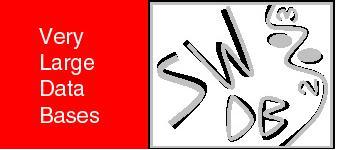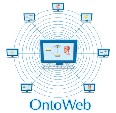
Semantic Web and Databases
| Co-located with VLDB 2003 Berlin, Germany September 7-8, 2003 |
 |
Supported in part by the OntoWeb Network |
Accenture Technology Labs
In this talk, I will use the example of bio-medical knowledge discovery to explore the key issues in semantic indexing of large amounts of heterogeneous information. I will propose a method and architecture for the creation of practical tools for semantic indexing and exploration.
The example I'll be using is the Knowledge Discovery Tool, or KDT, which contains a knowledge model of a large number of bio-medical concepts and their relationships: from genes, proteins, biological targets and diseases to articles, researchers and research organizations. Based on this model, the KDT index identifies over 2.5 million bio-medical entities with two billion relationships among those entities spanning 15 different knowledge sources. Clearly, the creation and maintenance of such an index cannot be done manually. KDT utilizes an extensive set of rules that cleanse, analyze and integrate data to create a uniform index.
Using its index, KDT presents the user with a uniform graphical browsing space integrating all underlying knowledge sources. This space is "warped" and filtered based on domain-specific rules customized for the needs of various groups of users, such as pharmaceutical researchers, clinicians, etc. Another customized set of rules discovers and graphically highlights potential indirect relationships among various entities that might be worth exploring (e.g., relationships between genes or between diseases). Finally, the tool enables several modes of collaboration among its users from annotations to activities tracking.
Currently, KDT is undergoing testing in two pilot settings: an early stage of the drug discovery process in a pharmaceutical company and a bio-medial academic research group.
Prior to joining Accenture, Anatole spent over 15 years conducting research and building commercial systems based on Artificial Intelligence and Natural Language processing technology. He held R&D positions at Coopers & Lybrand, Cognitive Systems, Inc., Schlumberger, and Bell Laboratories. In 1997, Anatole was named among the top 100 technologists in the Chicago area by Crain's Chicago Business. In 2000, Industry Week named Anatole one of the "R&D stars to watch."
Anatole studied Mathematics and Computer Science at Moscow State Pedagogical University and received his Ph.D. in Computer Science from Yale University in 1979.